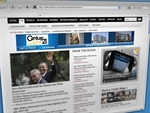Interactive Ecommerce Advertising is the New Normal
This contributed article is authored by Kirk Davis, EVP and Co-Founder of Liquidus, a solution which connects with a marketers database and places relevant information in online banners in real time.
For consumers who use smartphones or tablets to manage more and more of their daily lives, they expect a certain level of interaction. Images and content are expected to be dynamic and can be expanded or manipulated at will. This desire contrasts sharply to the model of online advertising that remains a flat and static image combined with text. Interactive online ads are a dynamic alternative that are improving in quality at a rapid pace, moving towards custom-produced commercials that give consumers access to the right product in less time.
Better Consumer Engagement
Interactive ads in this context allow the viewer to choose various options within the actual banner. Perhaps they can select merchandise for a closer review, click between different color options, or choose advanced options such as voice narration. If viewing a sales ad for a clothing retailer, the customer could sort by "men's" or "women's" apparel, then by "tops" or "pants". Once their desired list of clothing is narrowed, the customer could watch a high-quality video which shows the cut and fit of each piece. They could see the white top with the green pants, or vice versa. All of this is done within the banner, without leaving the publisher site.
Interactive ads that enable image zooming or panning not only provide a way to better view merchandise, they can also simply be a fun diversion for customers who always have an expectation of entertainment.
Customers that browse merchandise within the banner also save more time when they proceed to the advertiser's main site. Armed with more knowledge, they are able to quickly navigate and are less likely to perform every ecommerce provider's worst nightmare - shopping cart abandonment.
Publishers Enjoy the Stickiness Factor
For ad publishers, interactive ads allow viewers to remain on the site while they peruse merchandise. By not jumping to the advertiser's site, the viewer is exposed to more of the content and ads on the publisher site, increasing the chances of clicking other ads, and engaging with the publisher's own content.
Publishers also benefit from increased engagement rates for interactive ads which, according to Double Click, are often more than five times those of traditional rich media ads, regardless of vertical. Viewers spend more time with a video-driven ad, with up to 50 percent greater "stickiness". This increase in engagement results in a pre-qualification of customers, where the click-through rates might not be higher, but their propensity to ultimately make purchases is markedly increased.
Advertisers
Advertisers looking for lowered cost and efficiency can find both through interactive ads. Advertisers can typically utilize their existing photo catalog to populate their ads. A car dealership that has 10 shots of every car on its lot can get extra value out of the images by using them for their online advertising inventory. By adding a moving component to static images, advertisers lend some excitement to their products without incurring the additional expense of producing and editing full-motion video.
While this type of online ad format is certainly not brand new, it is maintaining a sense of newness because of all the new functionalities that are constantly being introduced (automated voiceovers and custom graphics) making them better and better at grabbing consumer attention, enabling better conversions and brand awareness. More customer interaction options within the banner also mean more reporting metrics that can be analyzed to find hidden customer preferences or desires.
Finding the Right Partner
Cutting edge ad services can provide advertisers with engaging banner content on the right publisher site. Connecting the advertiser's inventory to a database via a simple API allows real-time updates to products and merchandise that appear in interactive ad banners. For example, if a baby and toddler product retailer discontinues a lime green baby stroller from its database, that change can be automatically reflected in its entire network of video ads. When an online shopper comes to a publisher page with that retailer's ad, it is automatically called up, with video rendered on the fly.
This automatic updating of banner content is a very strategic option for retailers as they can dynamically manage pricing and selection without redoing creative content. Customer annoyance is avoided by not offering outdated merchandise, and sales items can also be timed to exactly mirror online or brick and mortar sales.
The latest ad serving technology allows the interactive ads to deliver professional quality at nominal cost. Professional narration can be included in the ads to describe product details, such as a description of an automobiles luxury and standard features. Advanced platforms can pull all of this updated information in less than a second.
To provide ads that fit rapidly changing consumer desires, it's all about expectations. The consumer wants customizable information that is attractively and clearly presented to help them quickly decide if a product holds their interest or not. The trick for advertisers will be to continue the evolution of the online ad to match these expectations through faster and even more interactive advertising vehicles.


